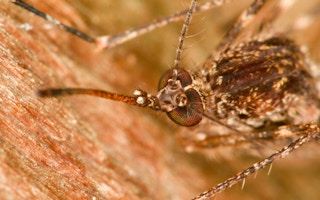In July this year, the death of a four-year-old girl in Manipur due to Japanese Encephalitis unleashed panic in the state. This was the first death from the deadly viral brain infection, transmitted by the Culex mosquito, since 2010.
Manipur has seen a surge in the virus this year, recording 45 cases this season, leading to two deaths, Sasheekumar Mangang, head of epidemiology in the Manipur health department, told thethirdpole.net.
Japanese Encephalitis is characterised by the inflammation of the brain and high fever. There is no medical treatment for the disease, and as with other viruses, patients are treated for the symptoms they develop.
Fatality rates for severe infections hover between 20 per cent and 30 per cent, according to the World Health Organisation (WHO).
Assam, an Indian state that neighbours Manipur, has also had a deluge of Japanese Encephalitis cases—304 cases so far this year with 1,256 cases of Acute Encephalitis Syndrome (which doctors say is linked to the virus)—leading to over 200 deaths, according to data from the health department.
As the central government declared Japanese Encephalitis (JE) a notifiable disease last month— which means all cases have to be reported to local authorities in order to halt further spread of the virus—experts blame climate change as one of the main reasons for the surge.
“
Climate change is one of the reasons for vector-borne diseases like Japanese Encephalitis becoming a threat for longer periods in the year.
Patowary, Assam health department
In Assam, the number of annual cases has risen almost five-fold from 154 in 2010 to 744 in 2014; deaths rose from 41 to 160 in the same period. The number may be far greater: doctors say that only 40 per cent of cases in Assam are diagnosed.
Patowary, a senior official in the Assam health department, said, “Climate change is one of the reasons for vector-borne diseases like JE becoming a threat for longer periods in the year.
Erratic rainfall and warmer months extending up to October-November is resulting in mosquitoes like the Culex finding an ideal environment to breed. The disease, which was earlier reported in the months of May-July, is now claiming a large number of victims until much later in the year.”
Mangang from the Manipur health department agrees. “Change in climatic conditions—extended periods of warm days, erratic rainfall causing flash floods, and thereby water stagnation—are contributing towards suitable breeding environment for the JE vector.”
The virus has also spread from a few “endemic” places in upper Assam, to all 27 districts in recent years.
Nearby western Myanmar is also facing a Japanese Encephalitis outbreak. So far 45 cases have been reported among children in Rakhine state, resulting in six deaths. Cases have been reported in four of its townships—Sittwe, Ponnagyun, Pawktau, Kyauktaw.
Authorities have launched a vaccination drive only in Sittwe because a lack of resources. Sittwe, as the most densely populated city, is considered a priority area—with 80,000 children being inoculated against the deadly virus.
A public health official said that five of the seven children who had contracted JE in Sittwe has been discharged from the hospital but had not regained their ability to speak.
Similar patterns across Asia
Researchers across Asia are finding similar links between changing climate and mosquito-borne diseases. A 2013 research paper on ‘Climate change and mosquito-borne diseases in China’ also links variability in temperature, precipitation, wind, and extreme weather events with the transmission of mosquito-borne diseases [including JE] in some parts of China.
The paper co-authored by Li Bai, Lindsay Carol Morton and Liu Qiyong, says, “Global warming might change temperature and rainfall patterns which may affect the development and infection capacity of both the mosquito and the virus (that causes JE).
Relative humidity is also important in the transmission of JE because mosquitoes can survive longer and disperse further in areas with suitable humidity…”
The paper notes that JE has spread to new parts of China, including high altitude areas of Tibet.
This story was published with permission from The Third Pole. Read the full story.










